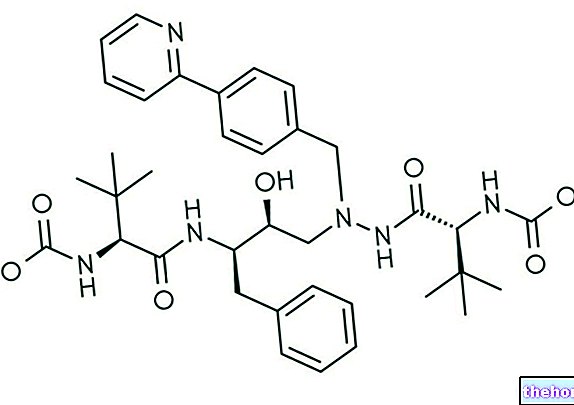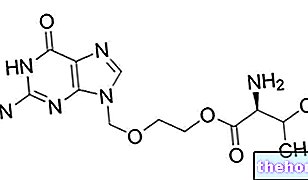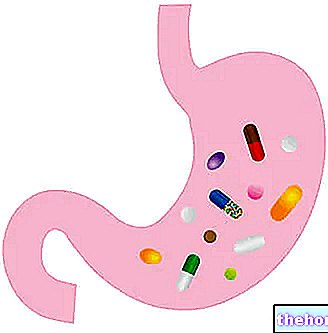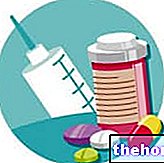Generality
The term "psychotropic" is intended to indicate a substance capable of acting on the psychic functions of the individual.

When, on the other hand, we talk about psychotropic substances, we generally want to indicate illicit substances, the use and production of which, sale and possession of which are absolutely prohibited by law. In these cases, therefore, it can be said that these psychotropic substances alter the normal psychic state of an individual.
Psychotropic drugs
When we talk about psychotropic drugs we want to indicate all those drugs used to normalize the psychic state of the individual, which can be altered by the presence of disorders or pathologies, or following the intake of other substances (such as, for example, substances psychotropic).
The group of psychotropic drugs is quite vast and includes different classes of drugs with the most varied activities.
Some characteristics of the main classes of psychotropic drugs currently used in therapy will be briefly illustrated below.
Antipsychotic Drugs
Antipsychotic drugs - also known as neuroleptic drugs - are used for the treatment of psychosis, i.e. for the treatment of serious psychiatric diseases, such as:
- Schizophrenia;
- Schizophreniform disorders;
- Schizoaffective disorders;
- Brief psychotic disorders and shared psychotic disorders;
- The delusional disorders;
- Substance-Induced Psychotic Disorders.
There are several classes of drugs belonging to the antipsychotic family that are still used in the treatment of the aforementioned disorders. Among these we remember:
- Phenothiazines with antipsychotic action, such as perphenazine, fluphenazine and prochlorperazine.
- Butyrophenones, such as droperidol, haloperidol and spiperone.
- Benzamide derivatives, such as sulpiride.
- Benzazepine derivatives, such as quetiapine, clozapine and olanzapine.
Antidepressant drugs
Antidepressant drugs are widely used to treat all what are considered mood disorders, ranging from depression to bipolar disorders.
The family of antidepressants is quite large and includes several classes, among which we find:
- Tricyclic antidepressants, such as clomipramine and amitriptyline.
- Selective serotonin reuptake inhibitors (SSRIs), such as fluoxetine and paroxetine.
- Norepinephrine and serotonin reuptake inhibitors (NSRIs), such as duloxetine.
- Selective norepinephrine reuptake inhibitors (NARI), such as reboxetine.
- Dopamine noradrenaline reuptake inhibitors (DNRIs), such as bupropion.
- Modulators of noradrenergic and serotonergic transmission (NASSA), such as mirtazapine.
- Serotonergic transmission modulators (SARI), such as trazodone.
- Monoamine oxidase inhibitors (MAOIs) and selective monoamine oxidase type A inhibitors (MAOIs), such as phenelzine and moclobemide respectively.
- Mood stabilizers, such as lithium salts, of which lithium carbonate stands out.
Sedative Hypnotic Drugs
Hypnotic sedative drugs are what are commonly referred to as "sleep drugs". The active ingredients belonging to this family of psychotropic substances, in fact, are used in the treatment of sleep disorders such as insomnia.
The classes of drugs belonging to the group of hypnotic sedatives are:
- The barbiturates. However, these drugs are no longer used to treat insomnia, as more effective and safer active ingredients are preferred. Their use is currently limited in the anesthetic field.
- Benzodiazepines, such as lorazepam, alprazolam, diazepam or flurazepam.
- Z drugs (from the English "Z Drugs", so called because of the initial of their name), such as zolpidem and zopiclone.
Anxiolytic drugs
The anxiolytic drugs are used in the treatment of anxiety disorders. Among the classes of drugs belonging to the group of anxiolytics, we find:
- Benzodiazepines, such as lorazepam or alprazolam. These active principles, therefore, at the appropriate dosages, have both anxiolytic and sedative-hypnotic activity.
- Agonists of the 5-HT1A serotonin receptor, such as buspirone.
- Selective serotonin reuptake inhibitors (SSRIs) such as fluoxetine, fluvoxamine and paroxetine. In fact, these molecules - in addition to exerting an "antidepressant action - have also been shown to possess anxiolytic properties.
Psychotropic Substances
As mentioned, when we talk about psychotropic substances, we refer to a heterogeneous set of products, the use of which is considered illegal. Often and willingly these substances are also defined as narcotic substances for recreational use, thus referring to that "set of substances whose use and production, possession and sale are considered illegal.
Among these substances, we remember:
- Cannabis and derivatives.
- Opium derivatives (such as heroin, methadone, etc.).
- Cocaine and derivatives.
- Amphetamines and derivatives (such as, for example, MDMA, otherwise known as "ecstasy").
- Hallucinogens, such as psilocybin, mescaline or LSD.
Naturally, all these classes of substances act on the psychic functions of the individual, in a different way and with different mechanisms of action, thus also producing effects of different types (for more detailed information on this, we recommend reading the dedicated articles present on this site).
However, in general, the aforementioned groups of psychotropic substances have one point in common. What unites them is the fact that they are all capable - to a greater or lesser extent - of inducing phenomena of dependence and tolerance (with the exception of hallucinogens which normally do not cause addiction, but which are capable of generating phenomena of cross tolerance with others. hallucinogens).




























